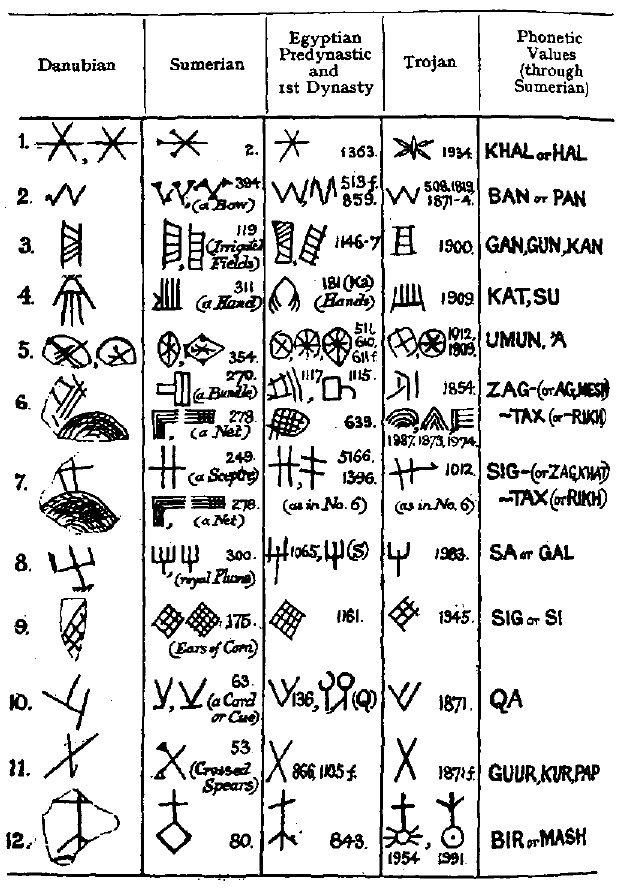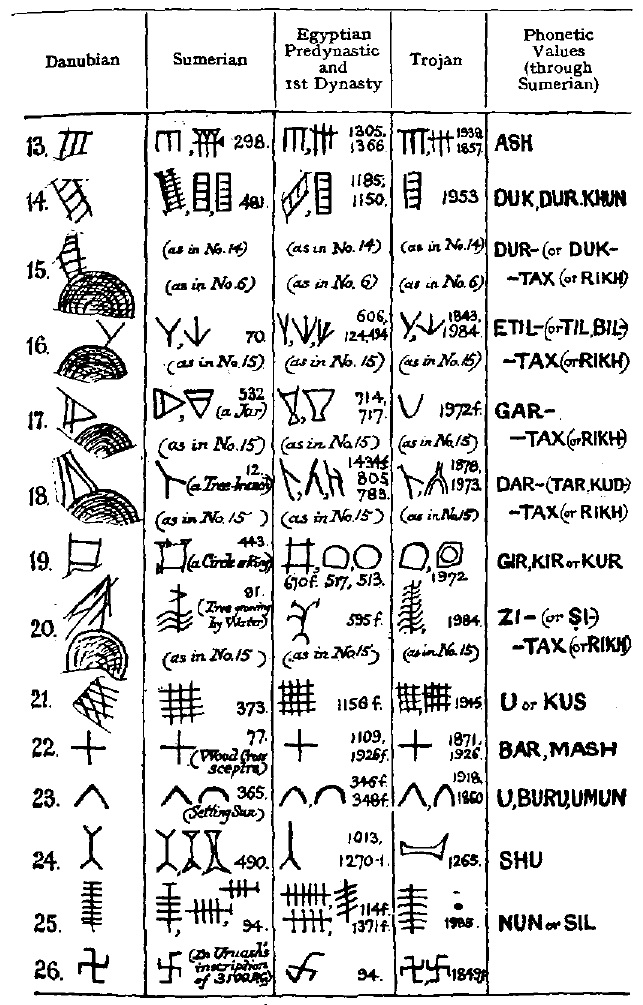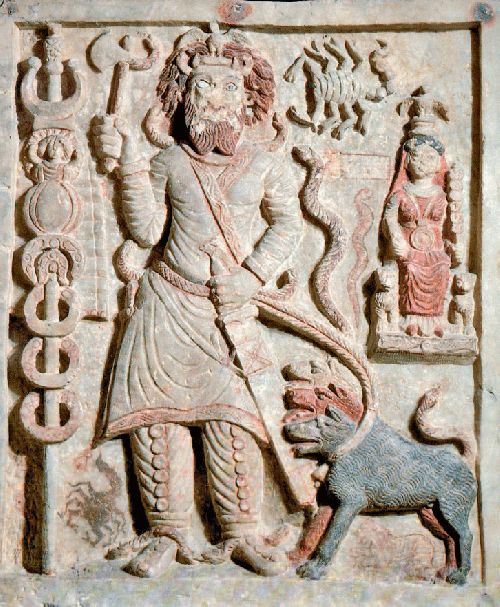
| TRIDENT 13. Trident :
Some shape of Vajra which we saw are two sided trident. Now, the question which arises in our mind is how Trident started. For this we have to again go back in Sumerian civilization.
Through the Aryan (Arya) Sumerian and Egyptian script we get a glimpse of how the Trident shape came into existance.
According to Lieutenant Colonel Laurence Austine Waddell :
From the Book Aryan Origin of the Alphabet 1927 :
The
other early alphabetic forms of S, which are found in some Cadmean
and Early Asia Minor and "Semitic" Phoenician inscriptions
are (a) "the tree-twig" shape (see Plate 11), and (b)
the plume or feathered crown
Phoenicians are Sumerian Aryans (Arya), from their inscriptions we find the Trident and since the early Egyptian dynasty of pharaohs (known as Prabhu (God) in India) were also Sumerians we find many similarities. The
second form, the plumed crown-sign is seen to be obviously derived
from the Sumerian
Below example from book The Makers of Civilization in Race and History :
FIG.
35. : Ebony Label Inscription from Menes "Tomb" at Abydos. From the Book The Makers of Civilization in Race and History :
Owners markings on prehistoric Danubian pottery compared with Sumerian, Egyptian and Trojan writing with their Phonetic values :
Nergal :
Nergal Here, we can see in relief of Nergal images such as Trident, Hawk, Scorpio, Snake, Lions, etc. Trident and Hawk represents Sun-worshipper Aryan symbol. Lions, Snake and Scorpio represents Chaldean culture hence, we can see a mixture of both civilizations.
Another important thing to note is that Nergal is associated with Mars and Amorites / Marutts are also known as Mars. Amazon women warriors are also called as daughters of Mars by this we can come to conclusion that after the marriage of Indra / Thor / Adam with Eve / Inanna there was peace between Sun worshipper Aryans and Chaldeans and after the death of Indra gradually both the cultures merged.
On the upper right hand side of the relief a woman is shown wearing a particular clothing. This sort of dress is still worn by the women of warrior community in India known as Rajputs / Kshatriyas. The reason behind this is that Rajputs / Kshatriyas are also Sumerian Aryans.
Nergal was associated with the Underworld and is usually the husband of Ereshkigal. He was also associated with forest fires (and identified with the fire-god, Gibil), fevers, plagues, and war. In myths, he causes destruction and devastation. He represents planet Mars, metal associated with him is Iron and Color is Red.
Resheph as Nergal Resheph of the Horns & God over Locust Swarms :
In the third millennium B.C.E. Resheph is identified with the god Nergal in a lexical text in Ebla, Nergal is spelled KIS.UNU. Nergal is known from an epithet from the God Lists of the early Dynastic period III as 'Gu-a-nun-gi-a', 'Bull whose great strength cannot be repulsed'. Sumerian hymns also recognize Nergal as a 'victorious bull'. The name of Nergal is from an early form of 'Lord of the City' being 'NIN.KIS.UNU'.
In Sumerian lore the name Nergal emerges from 'nin.eri' and thus 'unum-irigal, "Nerigal'. The 'Lord of the Great City' or 'Great dwelling' being the Underworld is a common term representing the place of shades. This development along with becoming the King of the Underworld was later after Nergal was well attested as a bringer of death and war-god.
As Nergal was as ancient in Mari as Resheph, they were considered identical not only in Ebla yet also Mari of which there was a ritual entitled 'The Feast of the Chariot of Nergal'. In Ugarit, the same logograms were used for both Resheph and Nergal. The Amorites worshipped Nergal as the god of war; his Amorite name was 'GIR.UNU.GAL-hazi-ir' or 'Nerigal-gazzir' 'Nergal is a Hero'. During the Middle Bronze Age Resheph was recorded on several cylinder seal inscriptions, 'Resheph, Lord of the Horns' appears wearing a crown with horns, holding the sickle-sword known as 'hps'. A female is facing the standing god adoring the Deific Mask, symbolizing his role as protector. The inscription is signed by 'Servant of Nergal / Resheph'.
In
Mesopotamia, Nergal was most likely promoted during the Sargonic
period (ca. 2300-2200 BCE) by the Assyrian king Naram-sin, Sargon's
grandson.
In
fact, according to a doctrine in Hellenistic astrology, Mars was
a god of war, death, and plagues. Ptolemy attested that Mars was
“assigned Scorpio and Aries, having a similar nature, and,
agreeably to Mars’ destructive nature and inharmonious quality”.
Since astrological reports by Assyrian astrologers mentioned similar
characteristics of Mars, the purpose of this research is to investigate
the attributes that were associated with Nergal in Sumer, Babylon,
and Assyria, and compare those attributes with the characteristics
associated with Mars in the extant works of Hellenistic astrologers. |





